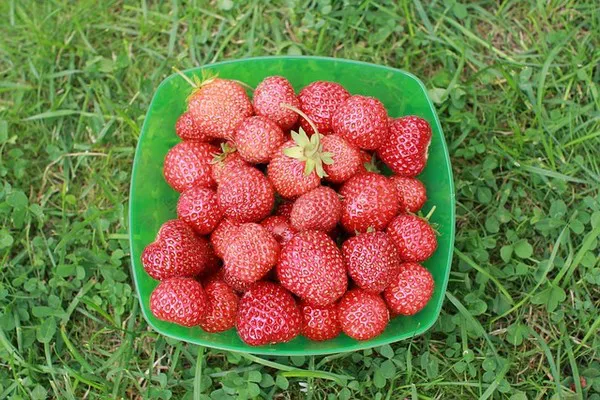Strawberries, with their juicy, sweet taste, are a favorite among fruit lovers and garden enthusiasts alike. Growing your own strawberries can be a rewarding experience, and the good news is that it’s not as challenging as it may seem. With the right knowledge and a bit of dedication, you can enjoy a bountiful harvest of fresh, homegrown strawberries. In this comprehensive guide, we will walk you through the steps to successfully plant and care for strawberry plants.
Choosing the Right Strawberry Varieties
Before you start planting, it’s crucial to select the right strawberry varieties. There are three main types of strawberries: June-bearing, everbearing, and day-neutral. Each type has its unique characteristics, so it’s essential to choose the one that suits your preferences and growing conditions.
June-bearing strawberries: These produce a single large crop in late spring to early summer. They are the most common type and are known for their rich flavor. Some popular June-bearing varieties include ‘Elsanta,’ ‘Chandler,’ and ‘Allstar.’
Everbearing strawberries: As the name suggests, these strawberries produce two to three smaller crops throughout the growing season. They are a great choice for those who want a longer harvesting window. ‘Fort Laramie’ and ‘Quinault’ are well-regarded everbearing varieties.
Day-neutral strawberries: These strawberries bear fruit continuously throughout the growing season, as long as temperatures remain between 35°F and 85°F (2°C to 29°C). ‘Seascape’ and ‘Tribute’ are excellent day-neutral options.
Selecting the Right Location
Once you’ve chosen your strawberry varieties, it’s time to select the perfect location for your strawberry patch. Here are some key considerations:
Sunlight: Strawberries thrive in full sun, so choose a spot that receives at least 6-8 hours of sunlight each day.
Soil Quality: Well-draining soil rich in organic matter is essential for strawberry plants. Conduct a soil test to ensure your soil has the right pH level (between 5.5 and 6.5). If needed, amend the soil with compost or peat moss.
Space: Provide enough space between plants to promote air circulation and prevent diseases. Typically, strawberries should be spaced 12-18 inches apart in rows with 2-4 feet between rows.
Protection from Frost: Consider planting strawberries on a slight slope to prevent frost damage, as cold air tends to settle in low-lying areas.
Planting Strawberry Plants
Now that you’ve prepared the site let’s dive into planting your strawberry plants. Follow these steps for a successful planting process:
Prepare the Soil: Before planting, remove any weeds or debris from the planting area. Incorporate organic matter like compost or well-rotted manure to enrich the soil.
Planting Depth: Ensure that the crown of the strawberry plant (the point where the roots meet the stem) is level with the soil surface. Planting too deep can lead to rot, while planting too shallow may result in drying out.
Spacing: As mentioned earlier, space your strawberry plants according to the type you’ve chosen, typically 12-18 inches apart in rows with 2-4 feet between rows.
Mulch: Applying a layer of organic mulch, such as straw or wood chips, helps retain moisture, suppress weeds, and keep the strawberries clean by preventing soil splashes.
Watering: Water your newly planted strawberries thoroughly to help settle the soil and ensure the plants receive enough moisture. Keep the soil consistently moist, but avoid overwatering, as strawberries are susceptible to root rot.
Caring for Your Strawberry Plants
Strawberry plants require consistent care throughout the growing season to ensure a healthy crop. Here are some essential care tips:
Fertilization: Strawberries benefit from regular fertilization. Apply a balanced, slow-release fertilizer in early spring and again after the first harvest. Be sure to follow the recommended application rates on the fertilizer label.
Weeding: Keep your strawberry patch weed-free to prevent competition for nutrients and reduce the risk of disease. Regularly check for and remove weeds by hand or with mulch.
Thinning: To encourage larger fruit, thin out excess runners and daughter plants. Allow 3-4 healthy runners per mother plant.
Disease and Pest Control: Keep an eye out for common strawberry pests such as aphids, slugs, and birds. Utilize organic pest control methods whenever possible. Additionally, be vigilant for signs of common strawberry diseases like gray mold (Botrytis) and powdery mildew.
Pruning: After the final harvest of the season, prune your strawberry plants by removing old, damaged leaves and any excess runners.
Harvesting Your Strawberries
The most rewarding part of growing strawberries is enjoying the sweet, ripe fruit. Here’s how to harvest your strawberries for the best flavor and quality:
Timing: Harvest strawberries when they are fully ripe. The best time to pick is in the morning when the fruit is cool.
Method: Gently grasp the strawberry between your thumb and forefinger, then pull it away from the stem. Avoid pulling the stem, as this can damage the plant.
Storage: Strawberries are best enjoyed fresh, but if you have a surplus, store them in the refrigerator in a single layer on a tray. This prevents them from getting crushed and moldy.
Conclusion
Growing strawberries can be a delightful and fruitful endeavor. With the right strawberry varieties, proper site selection, and careful planting and care, you can cultivate a healthy strawberry patch that yields delicious berries for years to come. Remember to tailor your care routine to the specific needs of your chosen strawberry type, whether it’s June-bearing, everbearing, or day-neutral. Enjoy the journey of tending to your strawberry plants and savoring the sweet rewards of your labor when you harvest those juicy, homegrown strawberries. Happy gardening!


